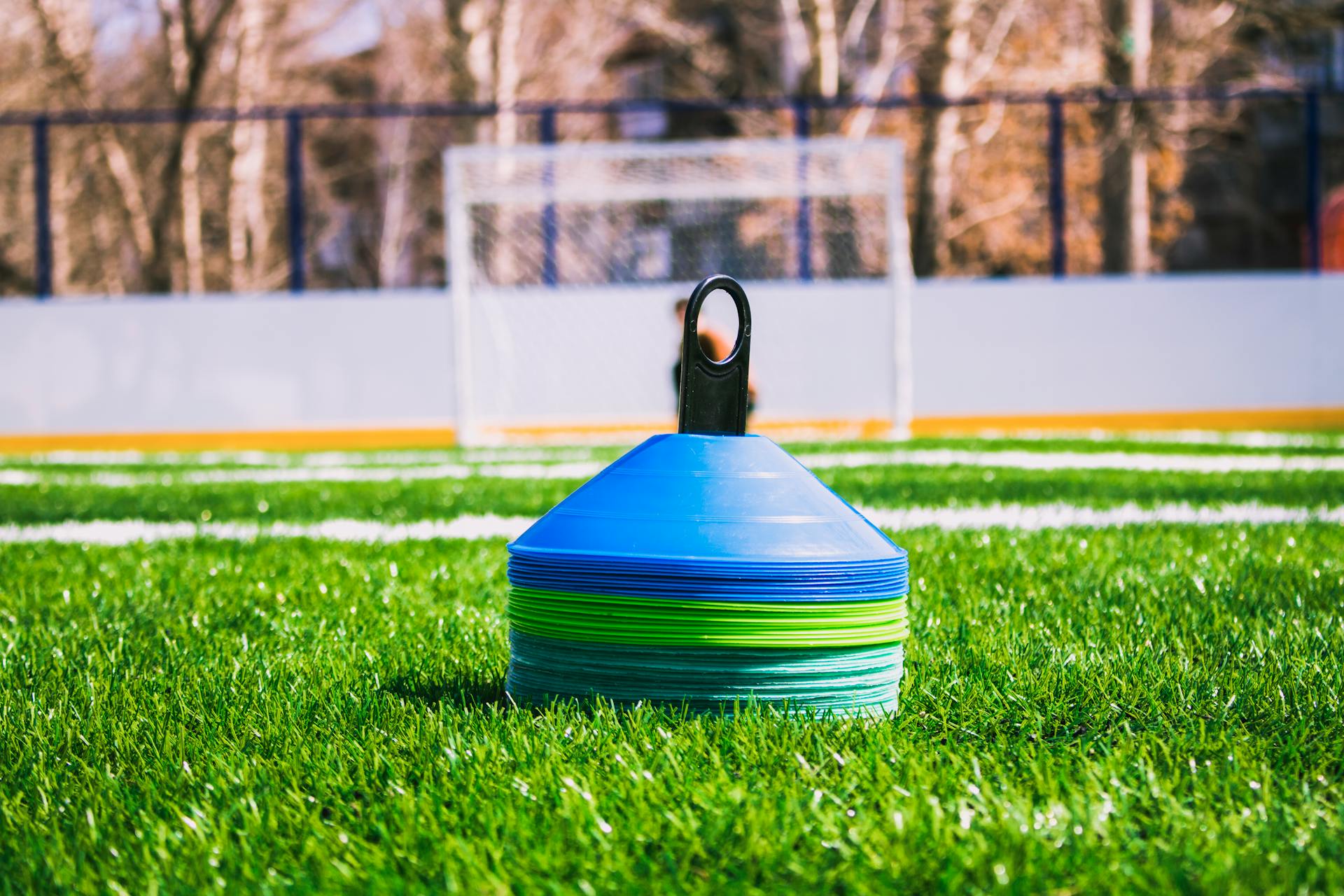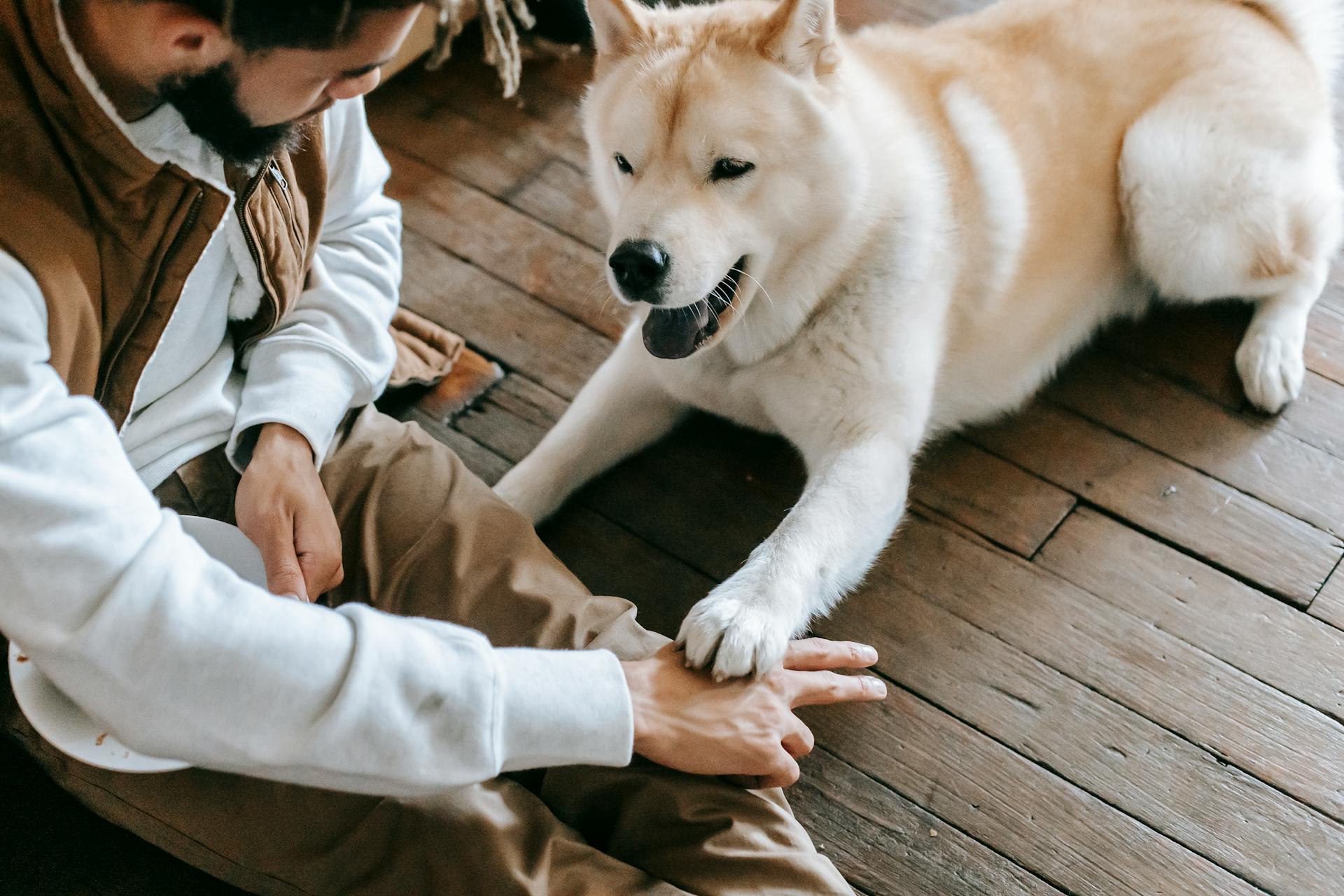
Resource guarding in dogs is a common issue that can be challenging to address. According to Cesar Millan, resource guarding occurs when a dog feels the need to protect a valuable resource, such as food or a toy, from others.
Cesar Millan defines resource guarding as a behavior where a dog becomes possessive and aggressive when approached by others while in possession of a valuable resource. This behavior can be triggered by various factors, including past experiences and genetics.
Dogs that exhibit resource guarding often display specific body language cues, such as staring, growling, or showing their teeth. These cues are a warning sign that the dog feels threatened and may become aggressive if not given space.
Resource guarding can be a serious issue that requires professional help to address, especially if it's causing problems in the home or in public.
Preventing Resource Guarding
Preventing Resource Guarding is crucial to avoid startling reactions from your dog. Currently, about 25% of private consultations are for resource guarding, indicating it's a common issue many dog owners face.
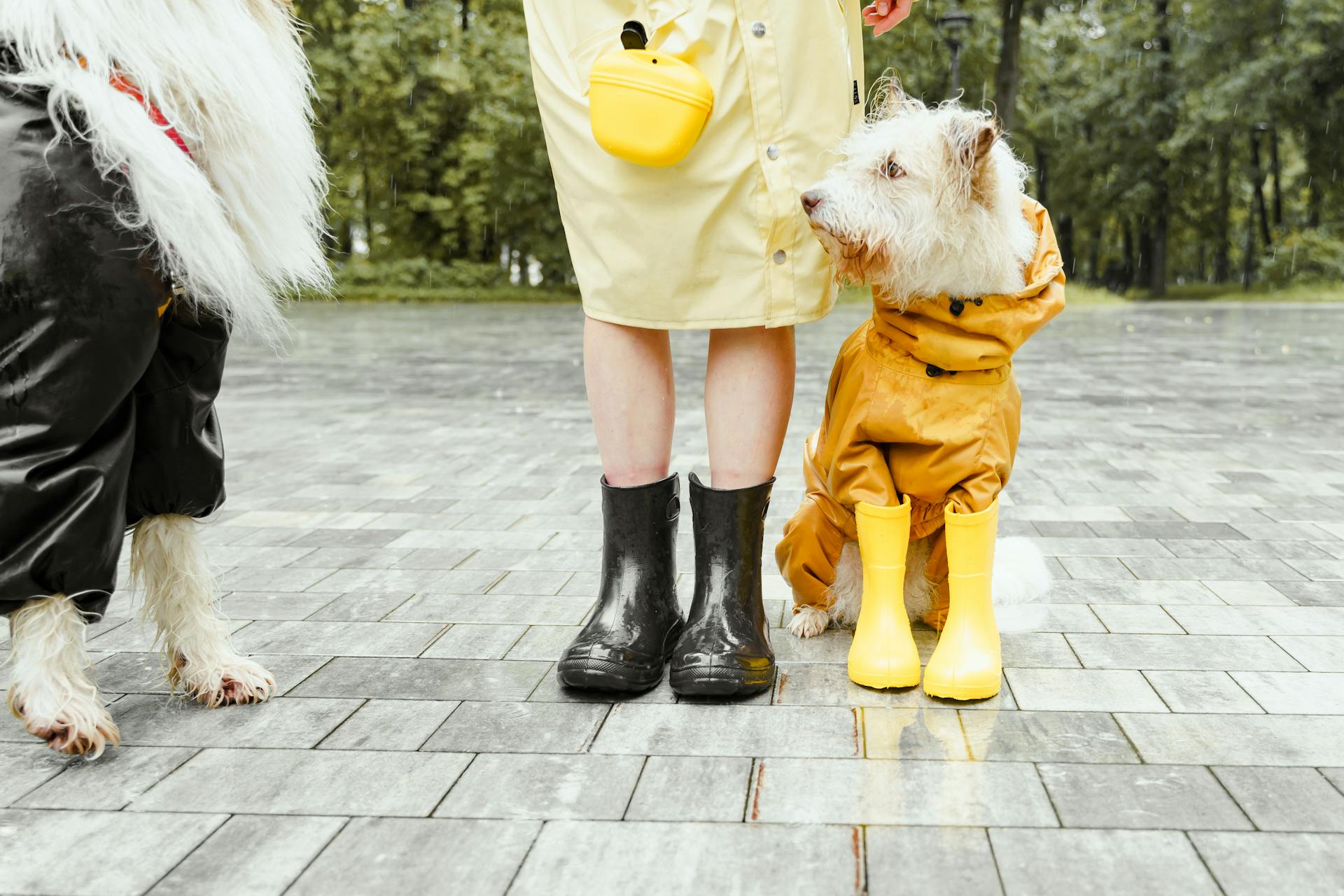
To prevent resource guarding, you need to ensure your dog has a positive emotion response to you approaching while it has a valued item. This means you want your dog to feel happy that you showed up because something even better might happen.
One of the simplest ways to prevent resource guarding is to let your dog enjoy their food in peace. This means leaving them alone while they eat, so they see no point in guarding from you. Imagine if someone stuck their hand into your food at dinner - you'd probably move the plate away from them next time!
Here are some proper ways to prevent resource guarding:
- Let your dog enjoy their food in peace!
- Use positive-sum trades, like approaching with something of higher value (such as cheese) while they're eating a chewy.
- Teach your dog both "Drop it" and "Leave it" using positive reinforcement.
- Occasionally approach while they're eating from their food bowl and drop something of higher value into the dish as you walk past.
Causes and Signs
Resource guarding is often caused by fear, anxiety, or past trauma, which can lead to possessiveness and aggression towards people or other animals who approach the guarded resource.
Some common signs of resource guarding include growling, snarling, or showing teeth when someone approaches the resource, as well as blocking access to the resource with the body.
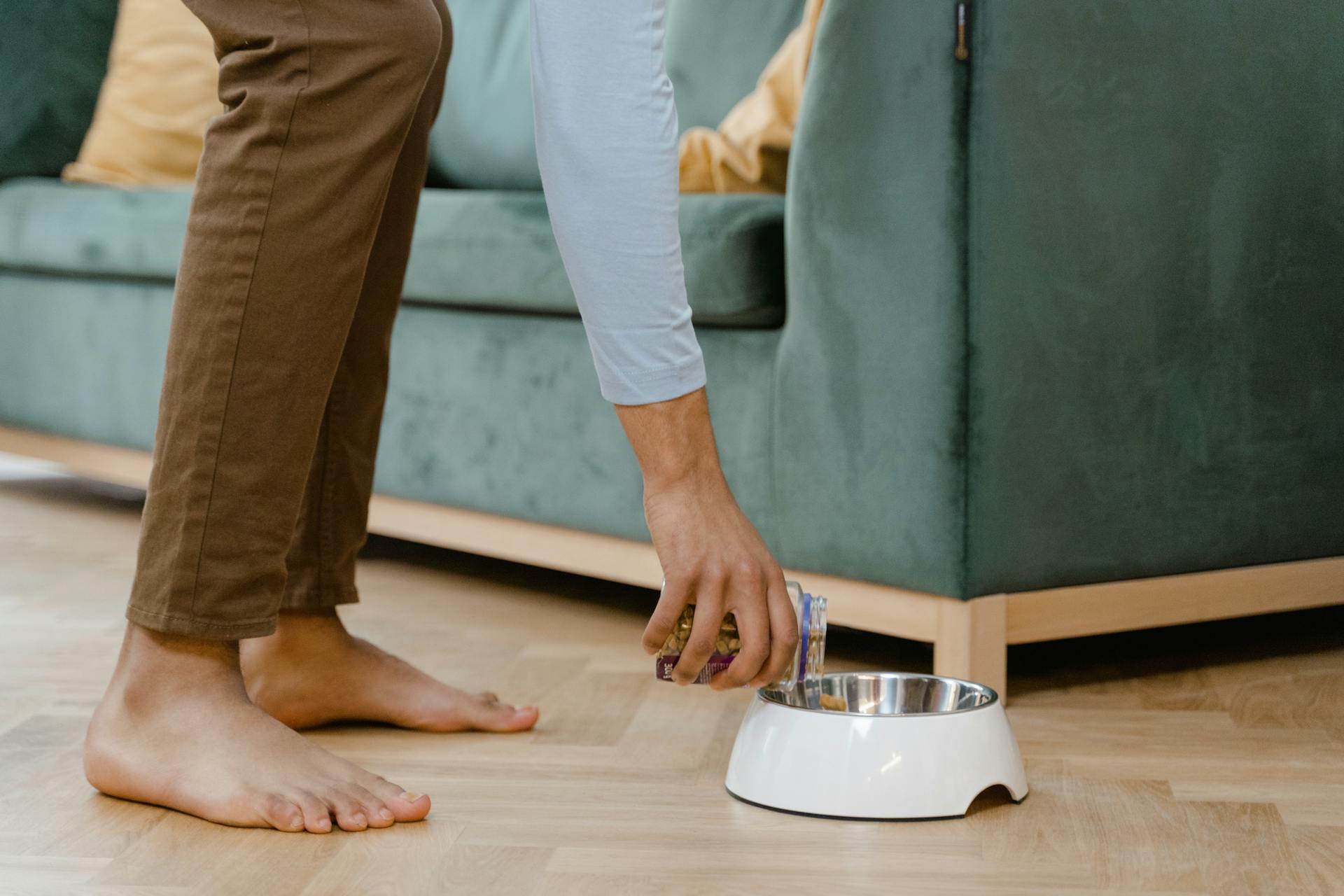
Resource guarding can be triggered by a variety of situations, such as eating or drinking, playing with toys, or even getting attention from people.
In some cases, resource guarding can be a learned behavior, where an animal observes another animal exhibiting aggressive behavior and imitates it.
If you notice your pet exhibiting any of these signs, it's essential to address the issue promptly to prevent it from escalating into more severe behavior.
Preventing Issues Properly
Let your dog enjoy their food in peace, just like you would want to enjoy your dinner without someone sticking their hand in it. This means leaving them alone while they eat, so they don't feel the need to guard from you.
Positive-sum trades are a great way to prevent resource guarding. For example, if your puppy is eating a chewy, approach with something of higher value like cheese. They'll trade the chewy for the cheese, and then get the chewy back!
Teaching your dog both "Drop it" and "Leave it" using positive reinforcement is also essential. This will help them understand that you're not a threat to their resources.
Occasionally approaching while they're eating from their food bowl and dropping something of higher value into the dish can build a positive association with you approaching during meals. Just be sure to do this occasionally, not every time, as it's still better to let dogs eat in peace the majority of the time.
Here are some proper ways to prevent resource guarding:
- Let your dog enjoy their food in peace.
- Use positive-sum trades to make approaching a positive experience.
- Teach your dog "Drop it" and "Leave it" using positive reinforcement.
- Occasionally approach while they're eating and add something of higher value to their dish.
Understanding Normal Behavior
Resource guarding is not abnormal behavior, it's actually a natural trait that helped dogs survive in the wild. In a natural environment, dogs would have to fight for food, mates, and space, so guarding resources was essential for their survival.
Dogs will often start with subtle signs like hunching over the item, giving hard eyes, freezing, consuming the item faster, or moving the item away from you, which can be easily overlooked.
Recognizing the Behavior
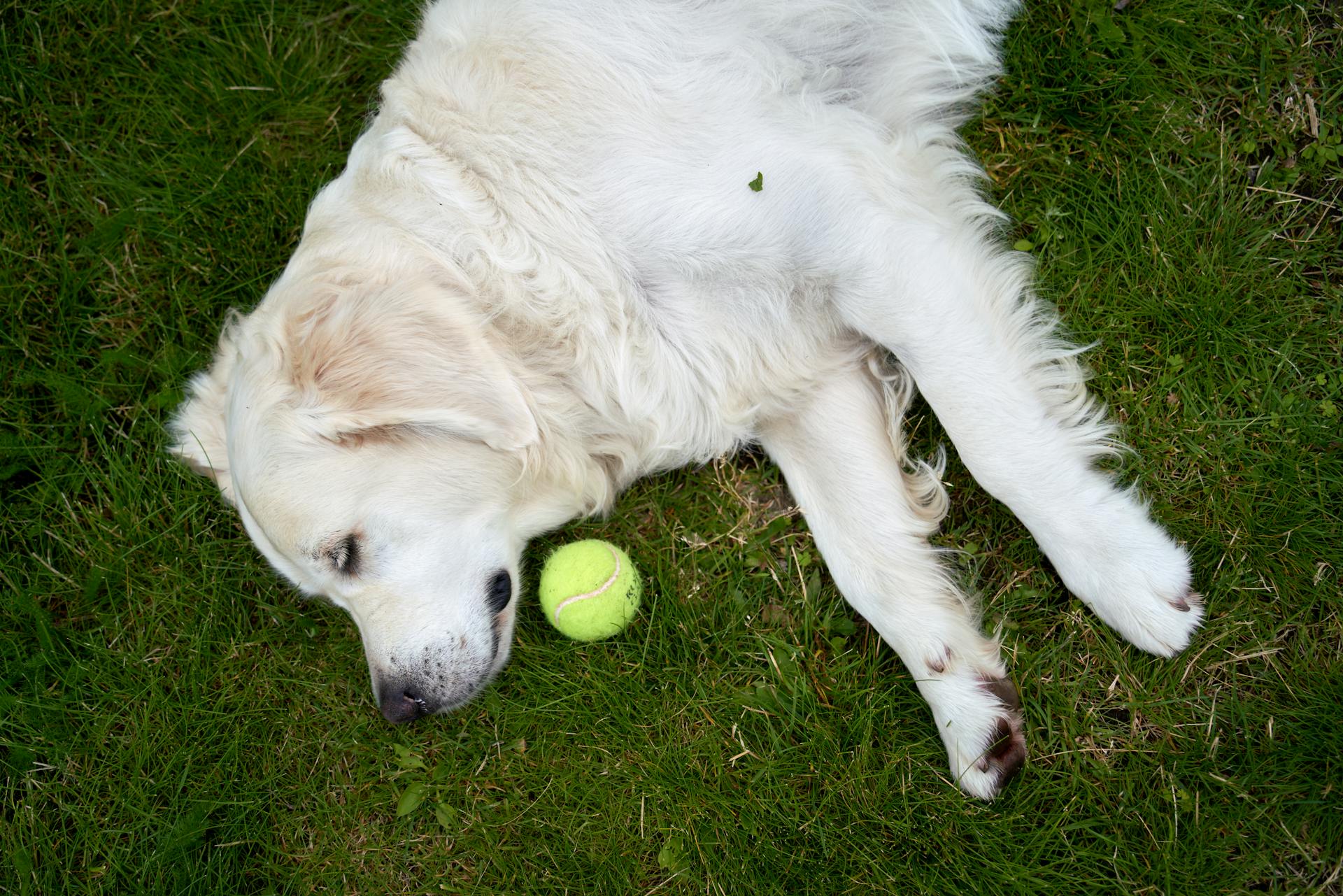
Recognizing the behavior of a person with a mental health condition can be a challenging task, but it's essential to understand the signs and symptoms to provide them with the necessary support.
People with anxiety disorders may exhibit excessive worry or fear that interferes with their daily lives, such as avoiding social situations or events due to fear of embarrassment.
They may also exhibit physical symptoms like rapid heartbeat, sweating, or trembling.
In individuals with depression, you may notice a change in appetite or sleep patterns, such as sleeping too much or too little.
They may also exhibit a lack of interest in activities they once enjoyed.
In some cases, people with depression may experience feelings of guilt or worthlessness.
Those with bipolar disorder may exhibit extreme mood swings, shifting from euphoria to depression in a short period.
They may also exhibit impulsive behavior, such as reckless spending or substance abuse.
Don't Accidentally Promote
Putting your hands in your dog's food dish while they eat can actually encourage resource guarding.
This behavior is similar to leaving your car unlocked to see what happens, and you might be surprised to find that the outcome isn't always what you expect.
Resource guarding can be inadvertently promoted by taking away bones during chewing to show "ownership".
Normal vs. Abnormal Behavior
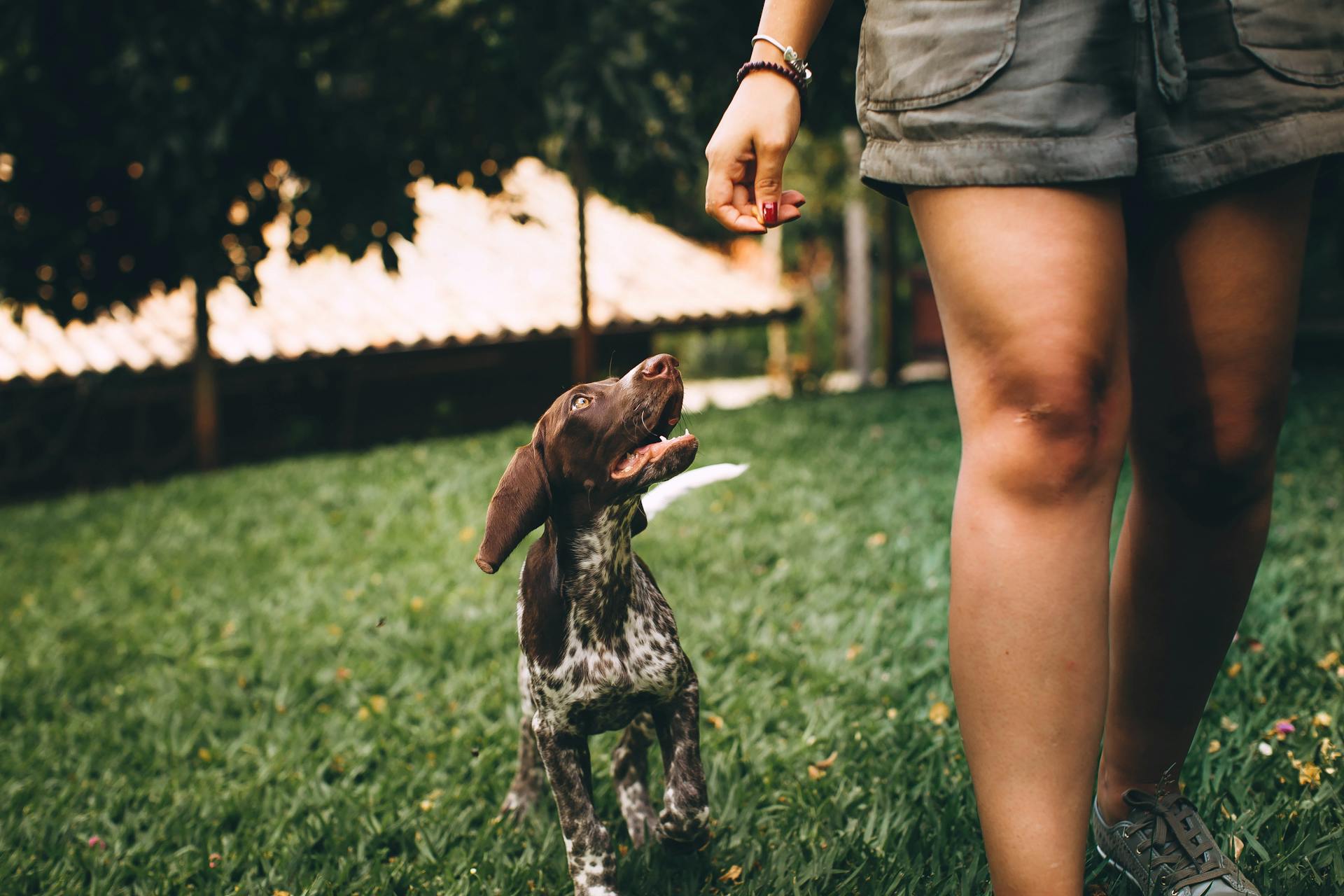
In a natural environment, resource guarding is a desirable trait that helps dogs survive. Dogs will guard food, mates, objects, or space to protect their valuable resources.
Dogs that resource guard in domestic environments are often misunderstood. People may think their dog is being dominant or "bad", but this is not necessarily the case.
Resource guarding is not abnormal behavior, it's actually normal behavior that's been shaped by the dog's natural instincts. In the wild, dogs that gave up their resources would not have survived.
A dog's resource guarding behavior can be extremely subtle, starting with signs like hunching over the item, giving hard eyes, freezing, consuming the item faster, or moving the item away from you. These signs are often ignored or unnoticed.
If a dog feels it's necessary, they will escalate their behavior to more aggressive displays like teeth shows, lip curls, snarling, and growling. Biting is often the final level of resource guarding behavior.
Punishment-based training can actually make resource guarding worse, increasing the chances of serious harm.
For your interest: Dog Training Resources
Understanding Canine Psychology
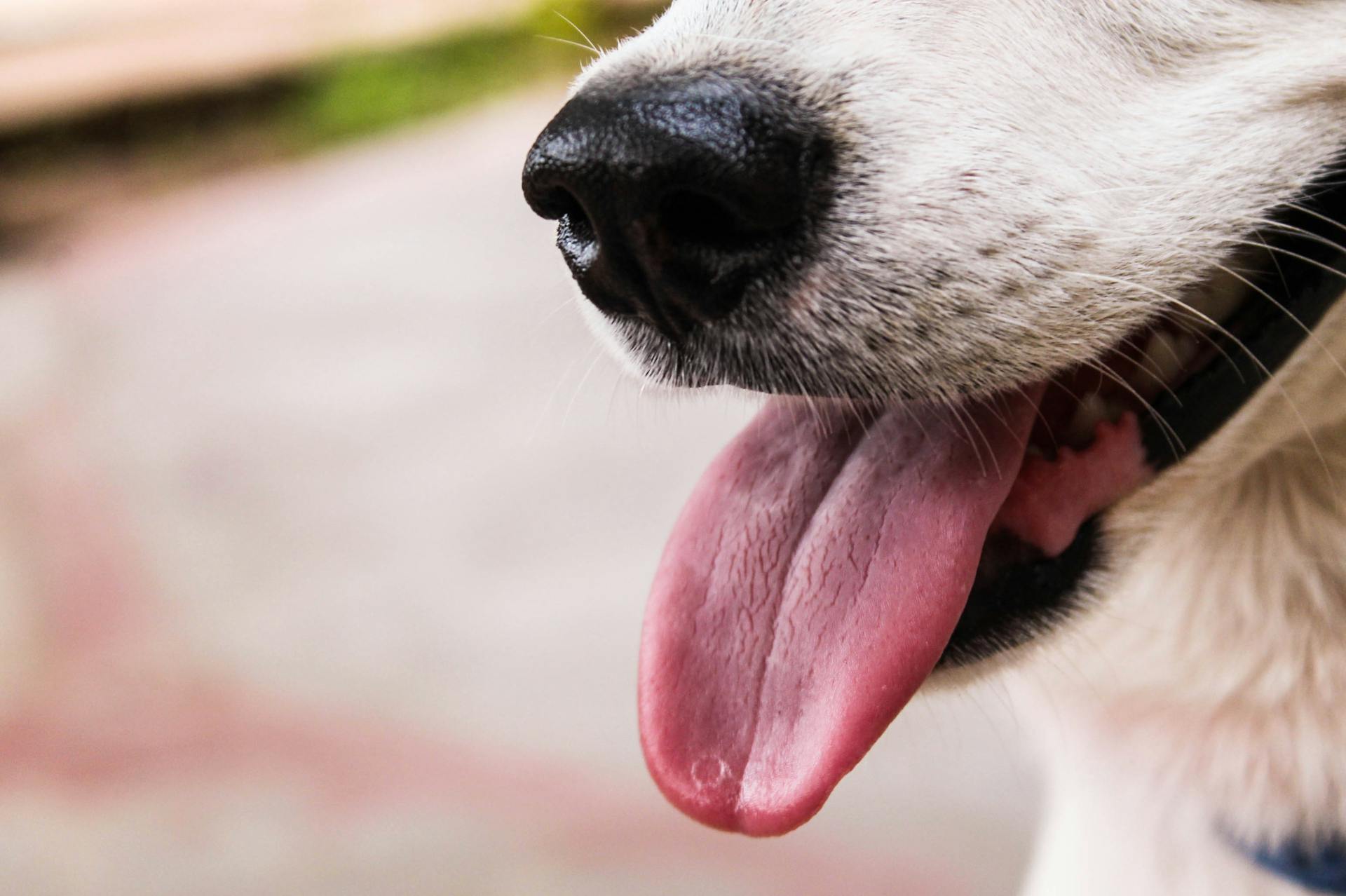
Dogs have a unique way of communicating with us through body language, and it's essential to understand what their postures and facial expressions mean. A relaxed dog will often have a loose, open posture with a wagging tail.
Some common canine postures include the "play bow" where the dog lowers their front legs and raises their rear end, and the "submissive crouch" where the dog lowers their head and tail.
Dogs also use scent marking to communicate with each other, and they have scent glands located on their faces, near their cheeks and lips. They use these glands to leave chemical signals for other dogs to detect.
A dog's tail can convey a lot of information about their mood and emotions, and a tucked tail can be a sign of fear or anxiety.
Additional reading: Dog Won't Wag Tail
Episode 66: Dog Aggression
Dog aggression is a serious issue that affects many dog owners, including those who are experienced like myself. My six-month-old puppy, This!, has recently started attacking other dogs in the household over resources, which has been a challenge to overcome.
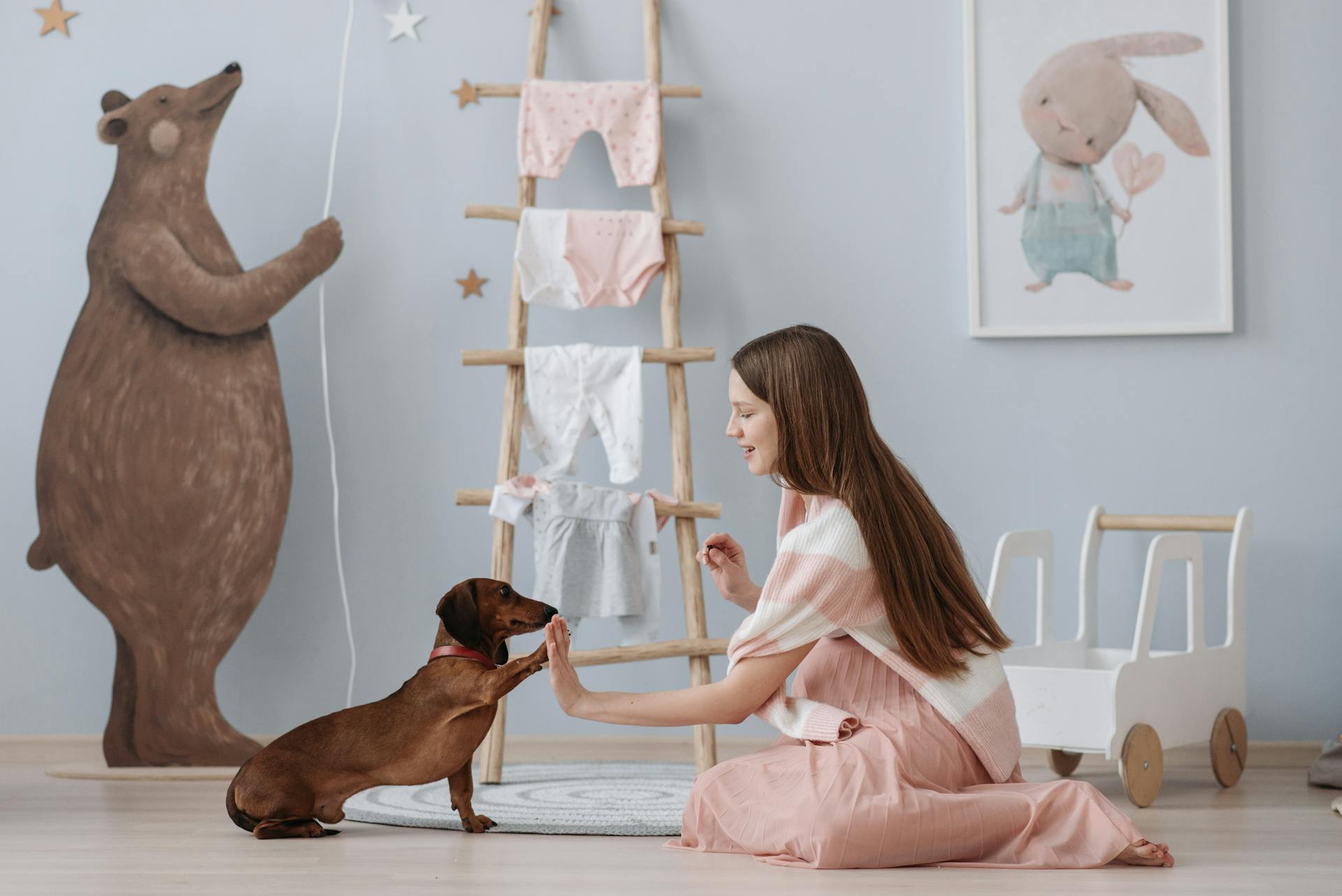
Resource guarding between dogs is a common issue, and there are two forms of it: against humans and against dogs. This behavior is more common than you might think, even among professional dog trainers.
Dogs resource guard for a variety of reasons, but one of the main reasons is to protect their food and other valuable resources. My puppy's behavior is a perfect example of this.
Some common signs of resource guarding include growling, snapping, and even attacking other dogs or humans. If you notice any of these behaviors in your dog, it's essential to address the issue promptly.
In my previous experiences with my dogs, I've seen resource guarding manifest in different ways. However, I've also learned that discipline and corrections can actually make the problem worse.
There are two approaches to addressing resource guarding: positive reinforcement and punishment-based methods. Unfortunately, punishment-based methods can lead to an all-out aggressive dog.
Here are some things NOT to do about resource guarding:
- Don't punish your dog for guarding resources
- Don't try to take food or other resources away from your dog
- Don't use physical force to correct your dog's behavior
Instead, focus on creating a safe environment and identifying and removing triggers. This might involve keeping your dog under threshold, which means not pushing them to their limits.
By following these steps and seeking help from a qualified Veterinary Behaviorist, you can help your dog overcome resource guarding and live a happier, healthier life.
Guarding Measures and Prevention
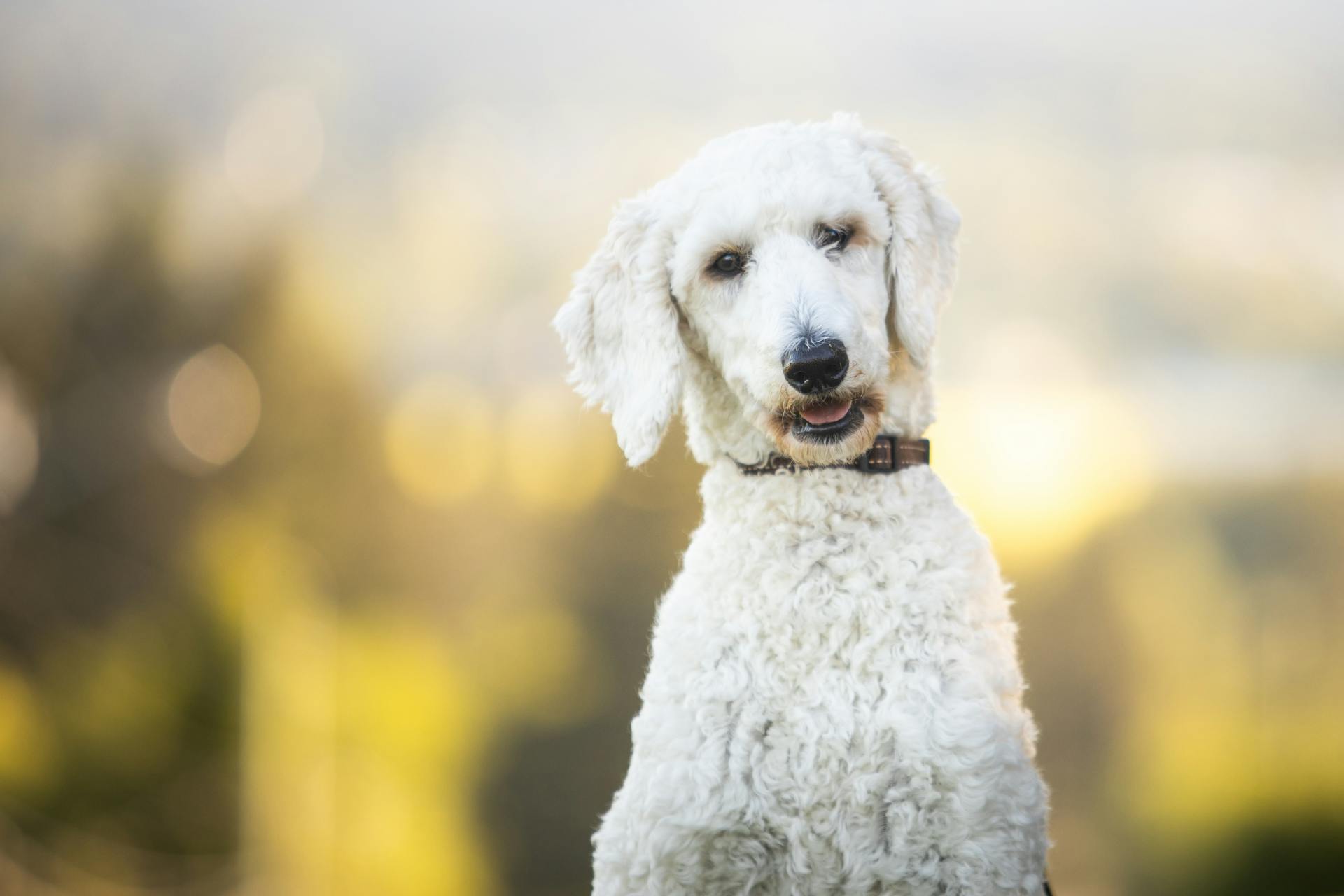
Resource guarding is a common issue in dogs, and it's essential to address it early on to prevent it from becoming a major problem. Around 25% of my private consultations are for resource guarding, which is a stark reminder of how prevalent this issue is.
To prevent resource guarding, it's crucial to ensure your dog has a positive emotion response to you approaching while it has a valued item. This means your dog should feel happy that you showed up, rather than feeling like the item needs to be guarded.
One of the best things you can do is leave your dog alone while they eat, so they see no point in guarding from you. Imagine if someone stuck their hand into your food at dinner - you'd probably move the plate away from them next time!
Positive-sum trades are another effective way to prevent resource guarding. If your puppy is eating a chewy, approach with something of higher value (such as cheese), and the pup will trade the chewy for the cheese, then get the chewy back.
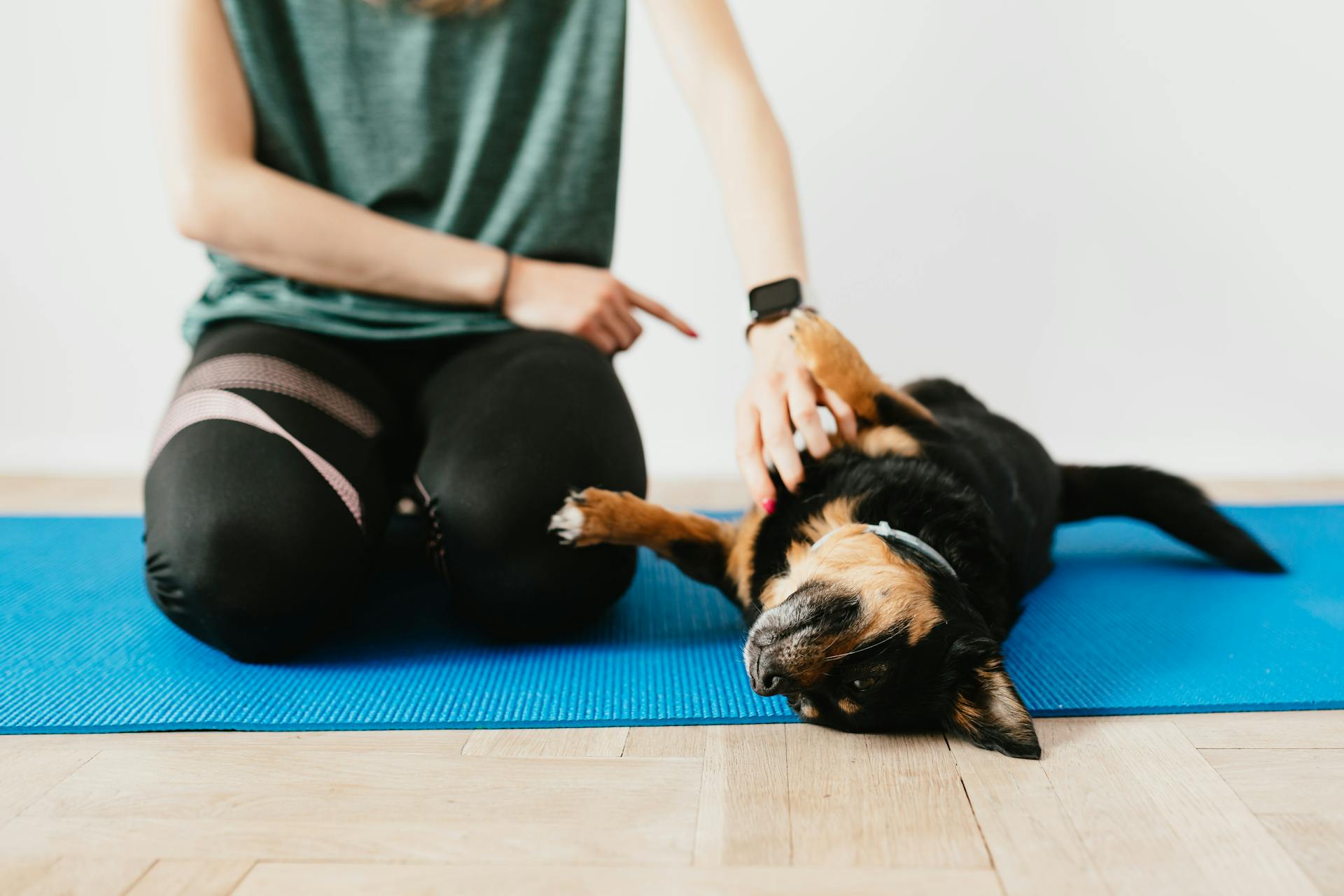
Teaching your dog both "Drop it" and "Leave it" using positive reinforcement is also essential. This will help your dog learn to release items on command and avoid guarding them in the first place.
Occasionally approaching your dog while they're eating from their food bowl and dropping something of higher value into the dish can also help build a positive association with you approaching during meals. Just be sure not to do this with every meal - it's still better to let dogs eat in peace the majority of the time.
Here are some key prevention strategies to keep in mind:
- Leave your dog alone while they eat.
- Use positive-sum trades to encourage trading of valued items.
- Teach your dog "Drop it" and "Leave it" using positive reinforcement.
- Occasionally approach your dog while they're eating and drop something of higher value into their dish.
Frequently Asked Questions
How do you break resource guarding in dogs?
To break resource guarding in dogs, provide sufficient and equitable resources and use positive reinforcement to encourage good behavior. Start by teaching "give" and "leave it" cues with rewards and trades to help your dog understand the value of sharing.
What breeds are prone to resource guarding?
Breeds prone to resource guarding include Cocker Spaniels, German Shepherds, and Chihuahuas, which may fiercely defend their toys and territories. Understanding their guarding tendencies can help with training and socialization.
Why did The Dog Whisperer get canceled?
The Dog Whisperer was not officially canceled, but its training tactics were criticized by the American Humane Association in 2006, leading to a request to stop airing the program.
Sources
- https://happyhoundsdogtraining.ca/what-is-resource-guarding-and-how-do-you-prevent-it/
- https://dogsthat.com/podcast/66/
- https://rocksolidk9.wordpress.com/2012/09/26/what-to-do-about-resource-guarding/
- https://www.everand.com/book/235574885/Cesar-Millan-s-Short-Guide-to-a-Happy-Dog-98-Essential-Tips-and-Techniques
- https://happydogtraining.info/dog-training-tags/
Featured Images: pexels.com
